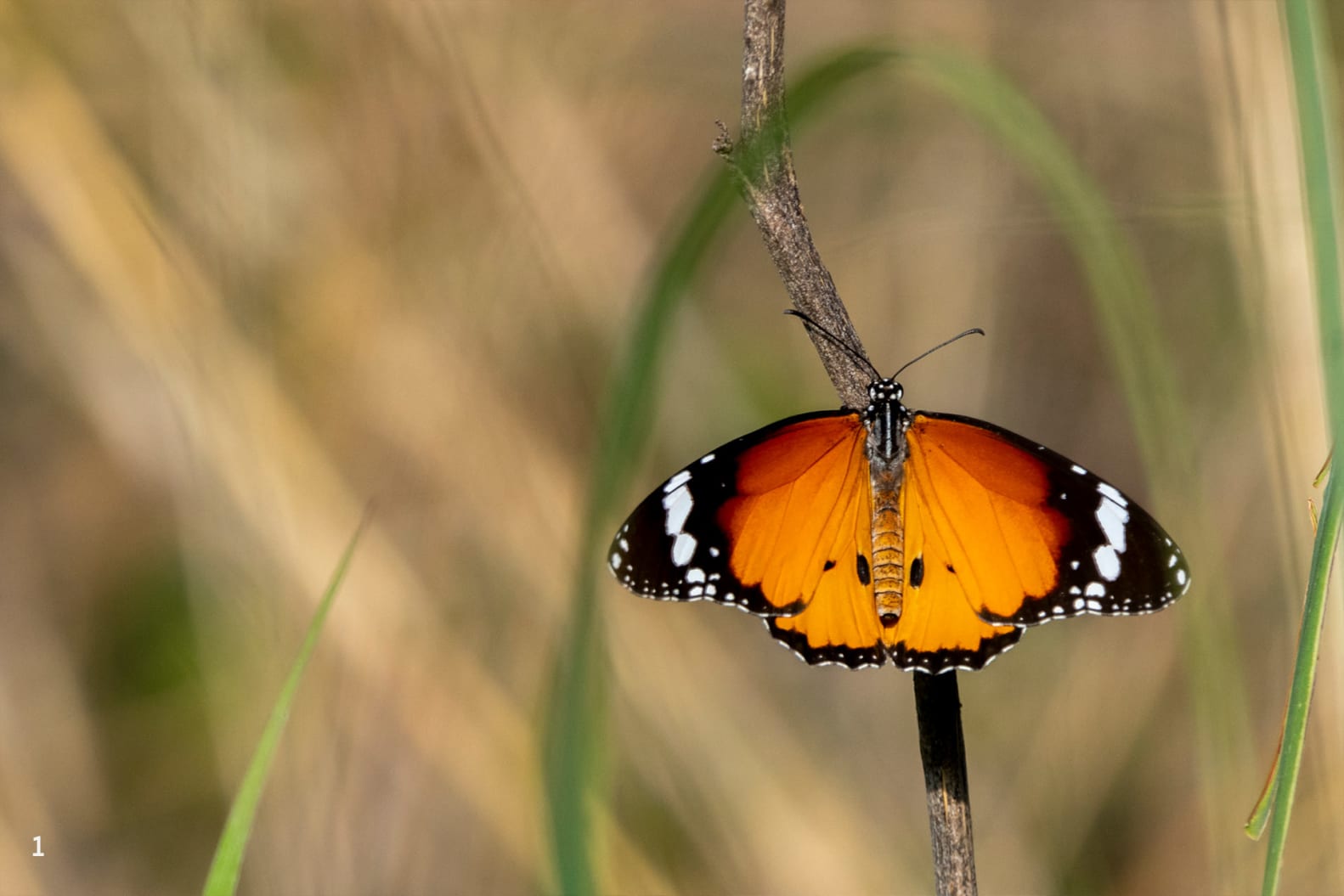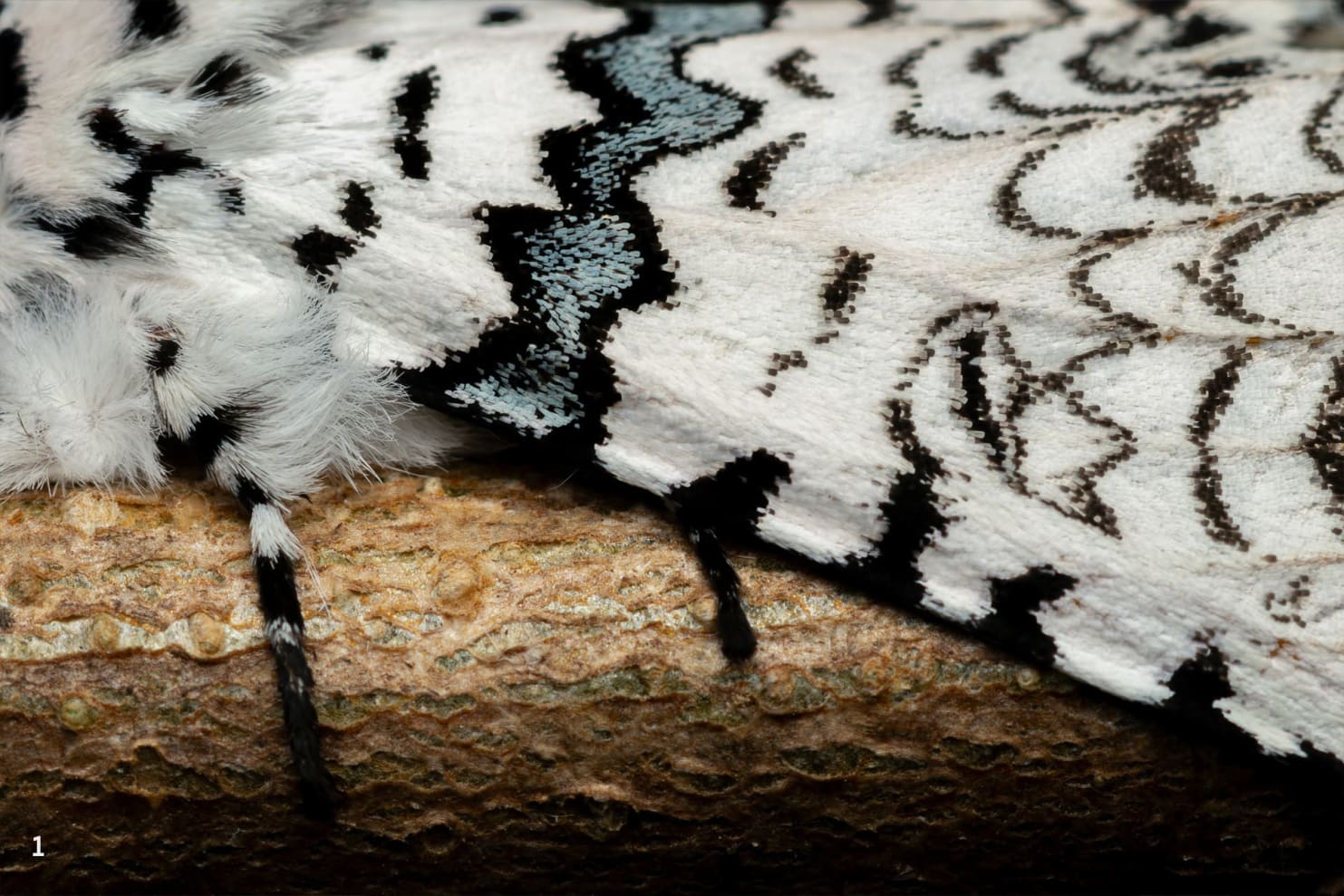 Listen to this article
•
15:34 min
Listen to this article
•
15:34 min
Gardens of vibrant blooms attract a riot of splashy butterflies, creating a pleasing mosaic. When it turns dark, the reticent yet ornately understated moths follow. Why have such elaborate colours and patterns? Anyone who uses make-up or paints knows it’s a structured process involving intricacies and effort. The “canvas” needs to be primed, outlines drawn, foundational base applied, colour filled in, and highlights added, to finally get it right. A lot of insects have simple translucent wings, good enough to fly. As is usually the simple answer to any complex evolutionary tale, the designs are for survival, and the flair has purpose. Protection from predators and finding mates for reproduction are the two modes of survival, and wing patterns are critical to Lepidoptera (the order of butterflies and moths). Some butterflies, like the common evening brown (Melanitis leda), may have distinctly different patterns in the wet and dry seasons for camouflage, but an individual butterfly does not change or repair its patterns. Lepidopterans are short-lived. Most butterflies live for 1-6 weeks, and moths from 3 days to 2 weeks, so they did not develop evolutionary mechanisms for the regeneration of wings. One cannot live for long without eating, and it may be surprising to some that adult baroque moths of the Saturniidae family, like the atlas moth (Attacus atlas), do not have mouth parts (a proboscis) to feed.
Despite their short lifespans, lepidopterans are important pollinators. Moths that visit flowers to feed are known to be more efficient pollinators than bees, according to Max Anderson et al., in PlosOne (2023), although, of course, it’s not a competition. The large variety of flowers and fruits in our environment are a gift from pollinators and they themselves are food for birds, bats, frogs, and lizards. Even in urban settings, small potted plants and green spaces with flowering weeds give these spirited designer bugs a chance to thrive and us a chance to marvel at their gentle magnificence.



Other genes “react” to this concentration to produce scales or colour pigments, which form patterns. Wavy lines, as seen in (1) Kamalia spp., are formed by different morphogens. Akin to the patterns left behind by waves colliding into each other on sandy beaches. Sometimes, morphogens cause a lack of scales or colour, which explains the transparent quadrangular region (called “windows”) in the atlas moth’s upper forewings. (2) Spots emerge when a morphogen does not diffuse far and carves a small circular territory, like a drop of thick oil paint.



Blue is a rare pigment in nature, but the blue tiger (Tirumala limniace) butterfly gets it from a pigment called pterobilin, produced using an amino acid found in proteins called glycine.
When an adult butterfly emerges from its pupa, its pigments and patterns are complete and are determined by its diet when it was a caterpillar. White is a common colour in butterflies and moths, which is due to the fact that their wing scales reflect or scatter all the colours in sunlight evenly.

What about iridescent blues and greens? These colours arise because of the nanostructure of butterfly wings. If we touch a butterfly wing, the powdery substance left on our fingers is broken scales. Each scale is made of two thin layers of a material called chitin connected by tiny pillars. These layers can have ridges, and stacked on the ridges are thin, flat layers called lamellae, kind of like shelves. When light rays fall on these different layers, they reflect differently and mix and create bright, shiny colours that we call iridescence. The spacing between these microscopic layers produces the main colour of the iridescence, like the green flecks seen in this Sahyadri Paris peacock (Papilio paris) butterfly. Other factors, like the thickness of the layers, also determine the colour of the iridescence.
Look at the same wing from different angles, and the colour can change or disappear! This indicates the colour does not come from pigment but is a result of light interacting with the structure.












